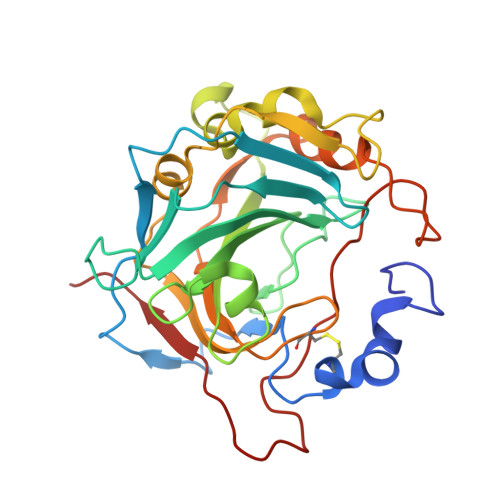Inhibition of Schistosoma mansoni carbonic anhydrase by the antiparasitic drug clorsulon: X-ray crystallographic and in vitro studies.
Ferraroni, M., Angeli, A., Carradori, S., Supuran, C.T.(2022) Acta Crystallogr D Struct Biol 78: 321-327
- PubMed: 35234146
- DOI: https://doi.org/10.1107/S2059798322000079
- Primary Citation of Related Structures:
7PLF, 7PRI - PubMed Abstract:
Clorsulon is an anthelmintic drug that is clinically used against Fasciola hepatica. Due to the presence of two sulfonamide moieties in its core nucleus, which are well recognized as zinc-binding groups, it was proposed that it may be efficacious in the inhibition of parasite carbonic anhydrases (CAs). Proteomic analyses revealed the presence of CA in the tegument of Schistosoma mansoni, and recently the druggability of this target was explored by testing the inhibitory activities of several sulfonamide-based derivatives. According to the principles of drug repurposing, the aim was to demonstrate a putative new mechanism of action of clorsulon and thus widen its antiparasitic spectrum. For this purpose, the inhibitory activity and isoform selectivity of clorsulon was studied using human CA I and S. mansoni CA, revealing different modes of binding of clorsulon that explain its inhibitory potency against the two enzymes. The information obtained in this study could be crucial in the design of more active and selective derivatives.
Organizational Affiliation:
Dipartimento di Chimica `Ugo Schiff', University of Florence, Via della Lastruccia 3, 50019 Sesto Fiorentino, Florence, Italy.


















